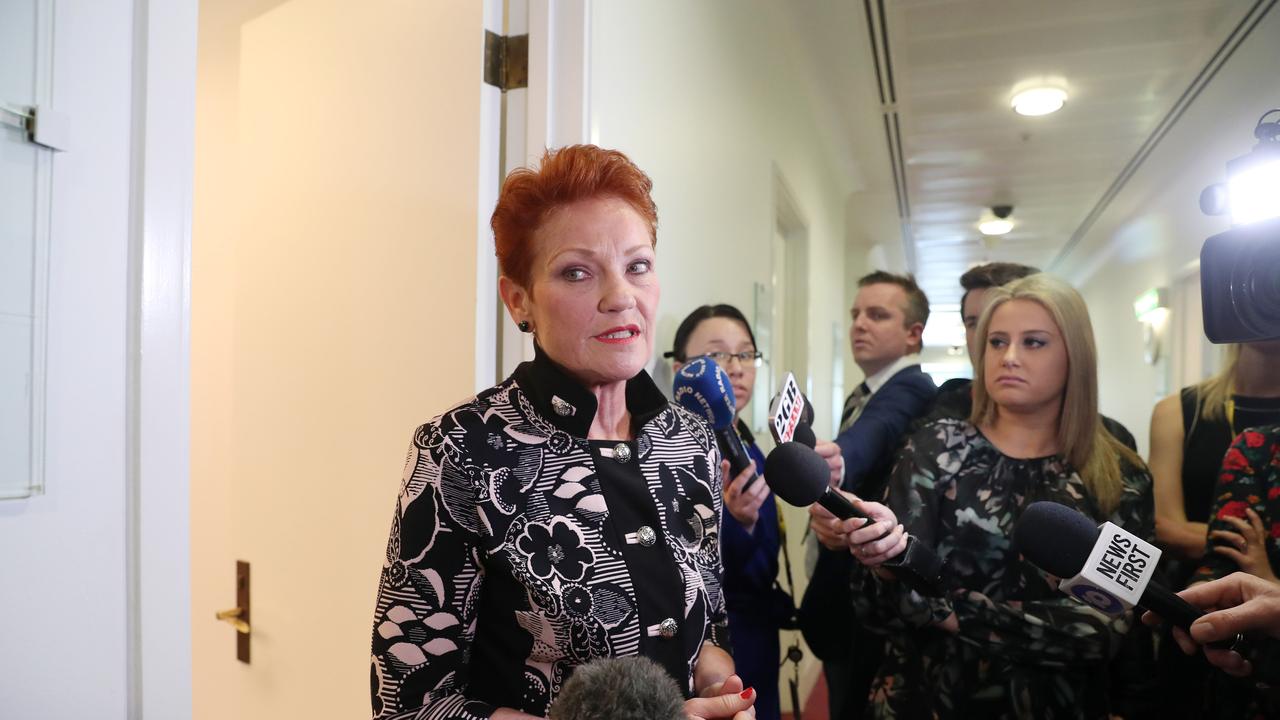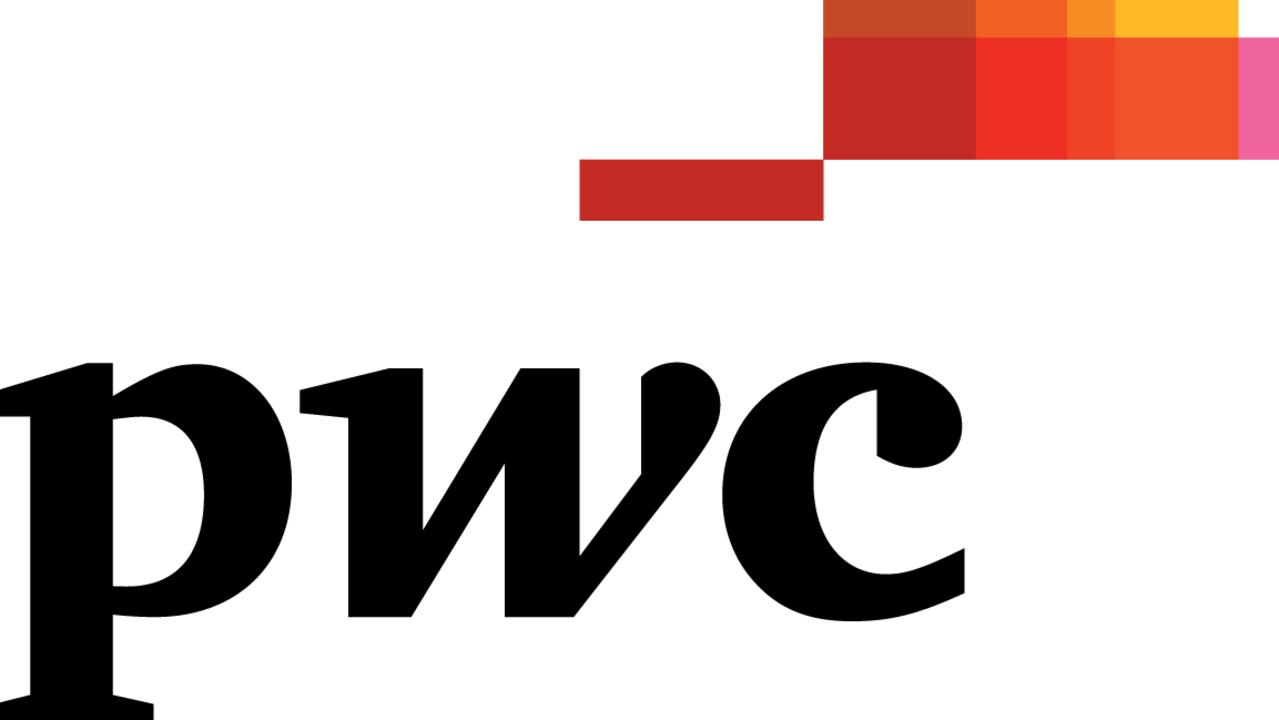China’s great wall of silence
China deliberately concealed information about the coronavirus, and now it is fighting an inquiry. So what is Beijing hiding?
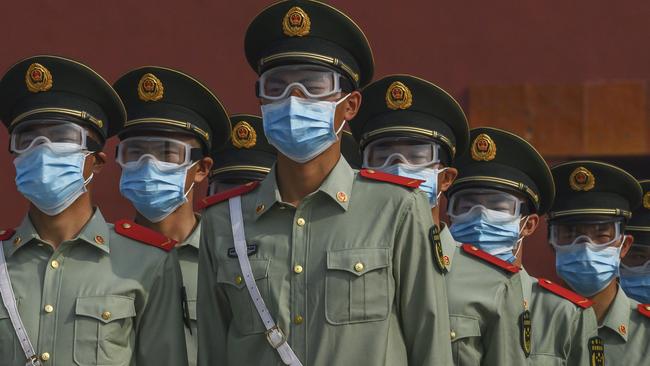
On January 3, Robert Redfield, head of the US Centres for Disease Control and Prevention, picked up the phone to his counterpart in China to ask him about rumours of a new and potentially deadly virus. Gao Fu, head of the Chinese Centre for Disease Control and Prevention, did not hold back. He burst into tears as he told Redfield about the mysterious new disease that had emerged in Wuhan.
Redfield was surprised. The Chinese government had yet to report its first death. While China had told the World Health Organisation’s Beijing office that a mysterious pneumonia had been found in Wuhan, it had not given any outward indication that things were serious.
Redfield rang US Health Secretary Alex Azar, who contacted the White House’s National Security Council, and within days, on January 6, the Trump administration had offered to send a team of America’s best disease experts to China.
“We made the offer to send the CDC experts in to assist their Chinese colleagues to get to the bottom of key scientific questions like, how transmissible is this disease? What is the severity? What is the incubation period? And can there be asymptomatic transmission?” says Azar.
But Beijing said no.
“China nice-talked it for a month,” says Kenneth Cuccinelli, a top US Homeland Security official. “ ‘Oh, well, thank you for the offer. Blah, blah.’ ”
What the White House did not know at that moment was that China was concealing from the world what it knew of a disease that was about to turn life as we know it upside down.
As an angry US Secretary of State Mike Pompeo put it this week: “This is an enormous crisis created by the fact that the Chinese Communist Party reverted to form, reverted to the kinds of disinformation, the kinds of concealment that authoritarian regimes do. The Chinese Communist Party had the opportunity to prevent all of the calamity that has befallen the world, and here we find ourselves today.”
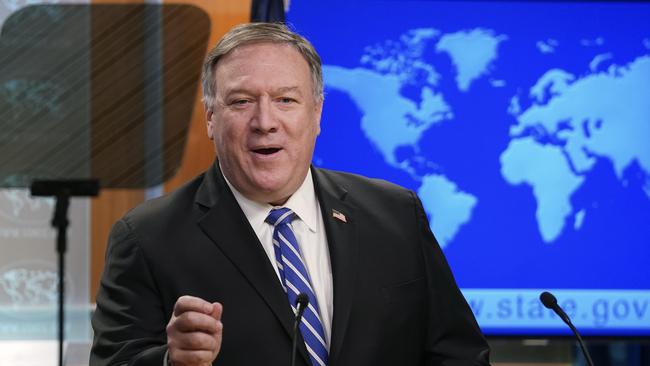
Now, with the Chinese-born virus cutting a swath of death and economic destruction across the globe, Beijing is being asked to explain.
Specifically, it is being asked to explain exactly how the virus began and why China underplayed to the world the disease’s ability to spread and kill.
Beijing stands accused of robbing the rest of the world of valuable time to prepare for the pandemic that was about to be unleashed.
For weeks, China kept to itself what would become the world’s deadliest secret. It concealed what it knew even from its own people. It buried the truth and punished doctors and reporters who tried to tell it. It let its own people travel across the world, knowing they could be carrying a highly contagious killer virus. In short, Beijing’s lies helped to infect the rest of the world.
The Trump administration says China’s bad behaviour has cost hundreds of thousands of lives around the world, and nowhere more than in the US where upwards of 75,000 people have died in just over two months — a toll greater than the wars in Vietnam, Iraq and Afghanistan combined.
China is confronting the biggest blow to its international reputation since Tiananmen Square, but it has hit back, denying that it deceived the world over the coronavirus. Its Foreign Ministry this week accused the US of attacking it for its own political motives.
“(The US has) only one objective: to try to shirk responsibility for their own epidemic and prevention and control measures and divert public attention,” said a spokesman.
‘Who in the world wouldn’t want an investigation of how this happened to the world?’
China’s ambassador to the US, Cui Tiankai, said the US in particular had fallen into “the absurd mindset of ‘always blame China’. Simply put, for some people China has to be wrong, regardless of the facts.”
Such is Beijing’s sensitivity that when Scott Morrison called for an independent and impartial international inquiry into the origins of the pandemic, China threatened blunt economic retaliation.
“Who in the world wouldn’t want an investigation of how this happened to the world,” Pompeo said as he backed Australia’s call.
So what is China trying to hide?
-
‘You are the sinner’
The Chinese Communist Party’s mighty propaganda apparatus seems to have been effective at shaping the collective memory of many of its 1.4 billion citizens about the origins of the new coronavirus. “No one wants China to be strong. The Americans might have played tricks,” a 40-something Beijinger tells The Weekend Australian as he waits in his removalist van.
It is a common opinion in China’s capital.
“I believe it’s from America,” says an e-commerce delivery driver around the corner as he packs boxes into a three-wheel motorbike. A young waitress at a nearby Jiangxi restaurant agrees. “There are more cases there,” she explains, adding that the virus may have been undetected in the US for months before it spread around the world.
The scientific consensus on the other side of the great firewall is that the virus most likely began in Wuhan, the capital of the central Chinese province of Hubei.
One of the first people known to be infected with what is now called COVID-19 was Wei Guixian, a 57-year-old prawn seller in downtown Wuhan’s notorious South China Seafood Wholesale Market, who first started feeling sick on December 10. As Wei’s symptoms worsened, her mind turned to what her encounter with the People’s Republic of China’s user-pays healthcare system was going to cost her. Working-class people in China’s rival superpower — tens of millions of whom are without health insurance — experienced the same anxiety when the coronavirus first started spreading in the US in the following months.
Concern about the cost of treatment likely delayed the identification of the new virus by weeks, as it spread among Wuhan’s working class late last year. Once it acknowledged the severity of the crisis, China’s government waived fees for COVID-19 treatment.
Wei was right to worry. Her three weeks in the Wuhan hospital network — which saw her moved from a local clinic to the Red Cross Hospital and eventually to the better-equipped Xiehe Hospital — cost her 70,000 yuan (more than $15,000), a tremendous sum for a vendor whose market remains closed five months later.
While she entered with financial concerns, Wei was discharged from Xiehe Hospital with a conviction that China’s governance system should have acted sooner.
“A lot fewer people would have died,” she told The Wall Street Journal in an interview conducted weeks before most of the masthead’s reporters in mainland China were expelled.
Almost a month before China’s government admitted as much, it was clear to Wei that the virus was spreading from human to human. One of her daughters, a niece, the niece’s husband and dozens of her co-workers at the market became infected.
China’s secretive, hierarchical political system discourages bad news. Its secrecy made for a perfect petri dish as the highly infectious and deadly coronavirus spread around Hubei — just as it had back in November 2002 when COVID-19’s sister coronavirus, severe acute respiratory syndrome, emerged in the southern province of Guangdong.
In some ways, that secrecy problem has become even worse as Xi Jinping’s central administration has further entrenched the party’s overseeing role in the world’s most populous country. When Xi’s cadres swear in their joining oath that they will “keep the party’s secrets”, they are expected to mean it. The oath holds even during an emerging pandemic, as Ai Fen, the head of the emergency department at Wuhan Central, discovered late on January 1.
“You are the sinner who affects the stability and unity of Wuhan,” a party official at the hospital thundered at her. “You are the culprit that undermines the development of Wuhan.”
The exchange was one of a number of extraordinary revelations by Chinese journalists that were promptly purged by state censors.
‘You are the sinner who affects the stability and unity of Wuhan’
Ai was one of the first doctors to make the link between the new coronavirus and the nearby South China Seafood Wholesale Market. She also had a rising caseload that proved in late December that the disease was transmitting from person to person, something that was not acknowledged publicly by China for three deadly weeks.
She had arranged for a laboratory to test the mysterious disease. Sharing the results of that test with her colleagues after it returned on December 30 was what had earned Ai her rebuke. One of the Wuhan Central hospital colleagues she shared it with was Li Wenliang, the 33-year-old eye doctor and party member, whose death from the coronavirus on February 7 unleashed an extraordinary emotional response throughout China.
Li posted what he had learned about the SARS-like illness in a closed message group on WeChat, a Chinese social media platform that is monitored by the country’s censorship regime.
Despite being the world’s most famous COVID-19 victim — and later being embraced by the party as a “martyr” after he was earlier denounced by police for “spreading rumours” — Li did not feature in the detailed timeline about China’s handling of the virus that was produced by the party’s news agency Xinhua.
The English translation of that timeline, carefully overseen by the party’s powerful propaganda department, ran to more than 21,000 words. Comrade Xi Jinping was mentioned 66 times, beginning with the “instructions” the official account records he first gave on January 7.
Revealing the Chinese government’s continuing unease about what happened at the pandemic’s origin, the timeline begins vaguely.
The first entry is imprecisely stamped “Late December 2019” when the “Wuhan Centre for Disease Control and Prevention in central China’s Hubei Province detected cases of pneumonia of unknown cause”.
As well as airbrushing Li, the official Chinese state account entirely purged the efforts of the medical professionals in Wuhan who tried to alert authorities to the new disease, only to be suppressed.
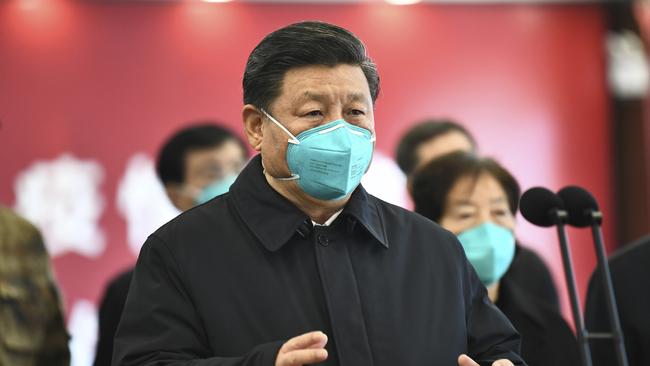
-
A Noah’s ark of wild animals
The earliest reported patient infected with what was later named COVID-19 was found in Hubei on November 17, according to a report in the South China Morning Post, the masthead owned by China’s richest man, Jack Ma, the Alibaba billionaire who is perhaps the Communist Party’s most famous member after Xi.
That was more than nine weeks before Wuhan, a city with a population of 11 million people, was put into lockdown on January 23. It was the biggest quarantine in history, until the next day when almost all of Hubei province, with its population of almost 60 million, was cut off from China and the rest of the world. It was a dramatic example of the power of China’s centralised political system. But did it come too late?
Identifying a new virus is always going to be a challenge for the first hospital system that encounters it. Doctors and disease experts in Wuhan, however, were aware that the public comments by local officials did not match their experience. Far more patients were arriving in their hospitals with symptoms of the new illness than was being disclosed. Many regret not speaking out after Li and the seven other “rumour spreaders” were punished. “We should have taken the risk,” Li Yunhua, a radiologist at the Hubei Xinhua Hospital in Wuhan, told Caixin, a Chinese media outfit with a well-deserved reputation for delicately treading around the instructions of the Central Propaganda Department.
These health workers were operating within a system that valued “political stability” over their professionalism. That much was put in writing in June 2018, as hospitals were moved under the control of their Chinese Communist Party secretary.
The new arrangement, announced by Xinhua, was required “to thoroughly implement Xi Jinping’s socialist thought with Chinese characteristics in the new era”. It was to “give full play to the leading role of the party committee of public hospitals”.
Less than two years later, what looked like an arcane internal matter overseen by China’s secretive governing party has changed the world. In part, it explains why Ai was reprimanded for looking into the new infectious disease. She had not taken appropriate “political” consideration. It is an arrangement that China’s government likely does not want an independent review to haven close look at.
The same goes for the guiding role of Wuhan’s government on its hospital system, which obediently reported very few cases of the highly infectious new disease between January 5 and January 16, a period leading up to and including the province’s two most important annual political meetings.
The relationship between the provincial and municipal governments and the powerful centre is another point of discomfort. In an interview on state media on January 27, days into Wuhan’s extraordinary lockdown which ultimately ran for more than two months, the city’s mayor, Zhou Xianwang, said China’s centralised political system did not allow him to reveal the true situation. “As a local government, we need to get authorisation before disclosure,” he said in an interview broadcast on China Central Television.
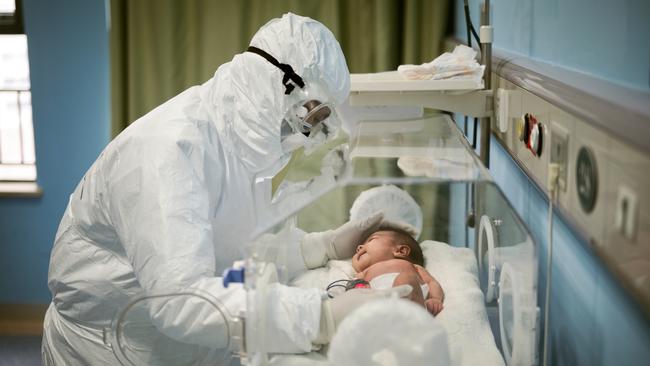
Then there are the destroyed samples of the virus. Caixin reported that on January 3, China’s National Health Commission, the country’s top health authority, ordered institutions in Wuhan not to publish any information related to the unknown disease and to destroy samples of the disease. The report apparently so upset the government that it was removed from Caixin’s website.
Some in Washington, including Pompeo and Donald Trump’s Mandarin-speaking Deputy National Security Adviser, Matt Pottinger, are increasingly keen to snoop around Wuhan’s virology labs. But the more orthodox interest remains in the world’s most famous “seafood” market, which also traded a Noah’s ark of wild animals, including snakes, hares, pheasants, giant salamanders and crocodiles. While the sale of many of those wild animals is officially banned, vendors told Caixin the trade has continued untroubled in the market’s western corner for the past decade.
‘How can we resolve the case without evidence? Tracing the pathogen is a complicated process’
But even if an investigation team were given access, it is not clear what they could learn. On the day before Ai was told off, a clean-up squad was sent in to disinfect and shutter the place — evidence the Chinese system was taking the situation seriously, in its idiosyncratic way. It has hugely undermined the effort to establish how the virus emerged.
“The market was closed, cleaned up, and the crime scene was gone,” said Guan Yi, director of the State Key Laboratory of Emerging Infectious Disease at the University of Hong Kong.
“How can we resolve the case without evidence? Tracing the pathogen is a complicated process. We can’t just find an infected animal and determine that was the origin.”
After being delayed more than two weeks, the WHO’s joint mission on COVID-19 was finally allowed entry into China in mid-February. The mission was led by Bruce Aylward, a Canadian epidemiologist, who in a notorious television interview in March refused to answer a question about Taiwan, apparently concerned about how Beijing would respond.
Only “select members” of the 25 visiting experts were allowed to go to Wuhan for the final two days of their eight-day site visit. The published itinerary shows they were kept away from the market.
-
‘The situation has changed radically’
As 2020 dawned, China stepped up its efforts to control knowledge about the virus. On New Year’s Eve, its censors introduced 45 coronavirus keywords to block online discussion of the emerging outbreak. According to Canada-based internet censorship research organisation Citizen Lab, this was later expanded to blocking 516 key words relating to the coronavirus. Any criticism of leaders or officials was blocked, as were any alerts to the public about the disease.
As this was happening, Li Wenliang was summoned to the Wuhan Public Security Bureau along with seven others who had issued online warnings about the virus. They were accused of spreading “hoaxes” and Li was forced to sign a statement that admitted to his “misdemeanour”.
Trump has accused China of grossly underestimating the number of infections and deaths from the virus in Wuhan and surrounding areas. A leaked report from Wuhan Central Hospital shows that local party officials put up barriers to doctors reporting cases, including requiring separate confirmation and approval to file each case. The guidelines also said patients could be counted only if they were linked in some way to the city’s main wet market, a rule that excluded the growing number of cases outside that cluster.
Citing classified Chinese government data, the South China Morning Post reported that by the end of February more than 40,000COVID-19 infections, then a third of China’s official total, had been omitted from its tally.
On January 9, after China announced it had mapped the coronavirus genome, the WHO praised Beijing for its handling of the outbreak and argued against the need for travel restrictions.
“Preliminary identification of a novel virus in a short period of time is a notable achievement and demonstrates China’s increased capacity to manage new outbreaks,” the WHO said, adding that “the virus does not spread readily between people”.
Behind closed doors, the Chinese disease prevention apparatus was much more worried. On January 14, it held a confidential teleconference to discuss the growing crisis. At the meeting, the head of China’s National Health Commission, Ma Xiaowei, laid out an assessment that was frank by official Chinese standards.
Notes of the meeting, revealed by the Associated Press, stated that the teleconference was held to convey instructions on the coronavirus from Xi, Premier Li Keqiang and Vice-Premier Sun Chunlan.
“The epidemic situation is still severe and complex, the most severe challenge since SARS in 2003, and is likely to develop into a major public health event,” the memo cited Ma as saying.
Publicly, things were still much more relaxed. On the same day as the grave teleconference, the WHO tweeted that “preliminary investigations conducted by Chinese authorities have found no clear evidence of human-to-human transmission” of the virus.
The next day Li Qun, the head of the China CDC’s emergency centre, said: “After careful screening and prudent judgment, we have reached the latest understanding that the risk of human-to-human transmission is low.”
To what extent did China’s early attempts to keep the virus a secret and play down its impact retard its own response to the threat?
‘I’ve often thought to myself, what would have happened if I could wind back time’
An international academic study in March, funded in part by billionaire philanthropist Bill Gates, found that if action had been taken against the outbreak “one week, two weeks or three weeks earlier in China, cases could have been reduced by 66 per cent, 86 per cent, and 95 per cent”.
Wuhan Central Hospital doctor Ai said: “I regret that back then I didn’t keep screaming out at the top of my voice. I’ve often thought to myself, what would have happened if I could wind back time.”
But the Chinese government was not ready to listen because it was worried the virus would undermine its international reputation. China had form in this respect. It was criticised for covering up SARS when it broke out in late 2002 and disclosed the virus months after it began to spread widely. Back then, elite politics contributed to the delay as the party leadership was preoccupied with the handover from Jiang Zemin to his successor as general secretary, Hu Jintao.
The cover-up then was even more blatant. To hide the spread of SARS from a visiting team from the WHO, infected patients were put into ambulances to get them out of the Beijing hospitals that the WHO team was inspecting.
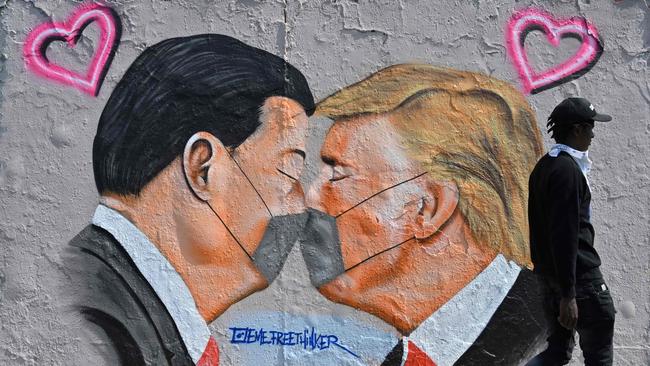
On January 17, three days before the Chinese government publicly admitted the virus could be transmitted between humans, the US CDC began screening passengers for infections after they arrived from Wuhan. With between 60,000 and 65,000 people travelling between Wuhan and the US each year, the potential for contagion was obvious.
But US officials at that stage were not seriously concerned by the threat — a strikingly different approach to Taiwan, an island as expert in the secrecy of the Chinese Communist Party as it is in infectious respiratory diseases.
“We know it is crucial to be proactive and prepared,” Nancy Messonnier, director of the US National Centre for Immunisation and Respiratory Diseases, said at the time. “(But) we believe the current risk from the virus to the general public is low.”
The next day, January 18, Health Secretary Azar first briefed Trump about the virus at his Mar-a-Lago resort in Florida.
Three days later, the first American, a man from Seattle, tested positive to the virus after returning from Wuhan.
Even so, Trump said he was unconcerned and that it was “totally under control … it’s one person coming in from China”.
In China, Xi made his first public statement on the virus on January 20, conveyed through state media. On the same day Zhong Nanshan, an 83-year-old who became a Chinese national hero after the SARS crisis, appeared on state television station to admit what Wuhan health officials had known for weeks — the virus was spreading between humans.
Despite this, just two days later, a WHO emergency committee concluded that the virus did not constitute a “public health emergency of international concern”.
After playing down the existence of the virus and its infectious nature, China then made a blunder that helped spread coronavirus across the globe.
On January 23 it shut down Wuhan, halting public transportation in and out of the city. But despite knowing the virus was on the rampage with 17 dead and more than 500 infections, it waited four more days — until January 27 — to suspend group travel to foreign countries. This meant that on the popular Lunar New Year holidays there was a massive exodus of Chinese travellers to all parts of the globe. Any hope that the coronavirus would be mostly contained in China was lost.
Australia recorded its first case of coronavirus during this period, on January 25.
By the end of January, with infections soaring in China and 259 deaths recorded there, the White House began to debate banning travel into the US from China, a source of 23,000 visitors a day.
For four days in the White House situation room, public health and national security officials clashed over the issue, with Azar telling Trump: “The situation has changed radically.”
On January 31, Trump was eventually persuaded by his health advisers to ban entry by foreign nationals who had recently visited China.
Beijing, despite observing the rapid spread of the virus in China, criticised the US decision, claiming it was “neither based in fact nor helpful” and “certainly not a gesture of goodwill”.
When Australia announced its own travel ban for foreigners travelling from China several days later, Beijing criticised Canberra.
-
‘They couldn’t put out the fire’
Although the Trump administration is now furious with China for its behaviour in relation to the coronavirus, it did not become openly hostile towards Beijing until late February.
As recently as February 7, Trump tweeted that Xi was “strong, sharp and focused on leading the counter-attack” and that “discipline is taking place in China as President Xi strongly leads”. Yet by late February, when it became clear that the US would be hit hard, the White House turned on China, asking what it knew about the virus, and when.
Pompeo accused China of mishandling the pandemic by employing “censorship” of medical professionals and the media. The White House’s anger about China underplaying the extent of infections and deaths in Wuhan was only heightened by China’s abrupt upward revision in April of the official coronavirus death toll. Beijing lifted the toll by more than one-third, or 1290 deaths, to 3869 — a number Washington believes is still far lower than the reality. By early March, as infections and deaths began to soar across the US, China began to hit back at growing criticism from the Trump administration and elsewhere.
Foreign Ministry spokesman Zhao Lijina sent Trump into a rage by suggesting the virus might have originated in the US. “When did patient zero begin in the US?” Zhao tweeted. “How many people are infected? What are the names of the hospitals? It might be US army who brought the epidemic to Wuhan. Be transparent! Make public your data. US owe us an explanation.”
A week later, around mid-March, US intelligence agencies noticed Chinese intelligence agencies pushing disinformation across social media. The messages, purporting to come from the Department of Homeland Security, claimed Trump was going to lock down the country the next day with “troops in place to help prevent looters and rioters”. The White House’s national security council was forced to respond by sending its own tweet to say that the Beijing-backed messages were “FAKE”.
In the face of growing criticism, China stepped up its efforts to avoid media scrutiny. It revoked press credentials for almost all American citizens working in mainland China at the Wall Street Journal, The New York Times and The Washington Post — its biggest expulsion of international press since Mao Zedong established the People’s Republic of China in 1949.
A week later, on March 23, the state-run Xinhua news agency claimed the “world should thank China” for its early response to the virus.
But far from thanking China, many are questioning its behaviour in this pandemic.
John Lee, former senior adviser to former foreign minister Julie Bishop and a senior fellow at the Hudson Institute in Washington, DC, says that when taken together, China’s actions on the coronavirus amount to “recklessness and even malice”.
“The criticism does not stem from COVID-19 emanating out of China but from the Communist Party’s initial emphasis on prioritising the controlling of messaging and suppression of its own doctors over preventing a national health crisis, playing down the severity and transmissibility of the virus to WHO and the world when it knew otherwise, and allowing its citizens to travel internationally when it was taking measures to protect its own country,” Lee tells The Weekend Australian.
“The CCP’s actions should also lead the world to consider the extent to which we should trust the CCP and place faith in Chinese authoritarian institutions as the country’s power grows and the CCP demands a greater leadership role in global institutions.”
A Pew Research Centre survey released last month found more than two-thirds of Americans now have a negative view of China — the highest level since the centre’s surveys began in 2005.
Trump has sharply stepped up his criticism of Beijing in recent weeks as the US death toll continues to climb, and he is expected to make China a major target during his upcoming election campaign.
This week, Trump and Pompeo have taken their criticism to a new level, with both embracing the idea that the virus emerged from a Chinese laboratory in Wuhan. “My opinion is they made a mistake,” Trump says. “They tried to cover it, they tried to put it out. It’s like a fire. You know, it’s really like trying to put out a fire. They couldn’t put out the fire.” Pompeo says a “significant amount of evidence” points to a lab being the source, although he has not revealed what this evidence might be.
Scott Morrison has distanced himself from those claims, believing a wild animals market is the most likely source.
‘There is no question of Chinese malfeasance. The damning facts are indisputable’
US intelligence agencies are looking into the lab theory but have not come to any conclusions. However a Department of Homeland Security Intelligence report written on May 1 concludes Chinese leaders “intentionally concealed the severity” of the pandemic in early January. The report argues Beijing hid details to hoard medical supplies to deal with the outbreak.
Morrison is making a global push for an inquiry into the origins of the virus and has written to G20 leaders seeking their support. So far the US, New Zealand and the EU have supported an inquiry, but discussions continue as to when it would begin and how it would be organised. Australia’s Foreign Minister Marise Payne welcomed the growing discussion about an independent COVID-19 review that “Australia helped start nearly three weeks ago”.
Meanwhile, the WHO said this week it had asked China to approve a fact-finding origins review. After escalating rhetoric about the lab theory, China’s Foreign Ministry spokeswoman Hua Chunying on Thursday said Beijing would support the WHO’s origins review “at an appropriate time”.
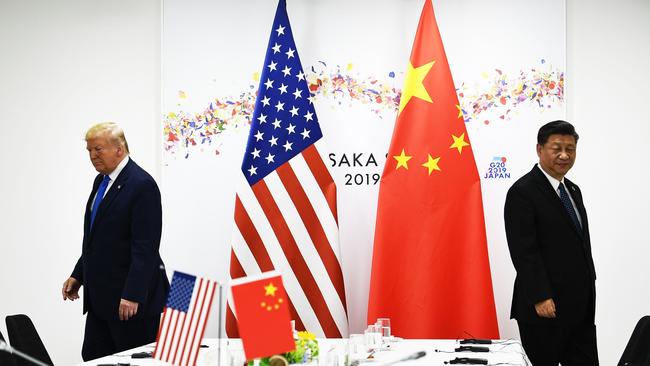
Pompeo and Trump are pushing for an even broader reckoning, threatening unspecified punishments for Beijing. Says Pompeo: “China behaved like authoritarian regimes do — it attempted to conceal and hide and confuse.”
James Jay Carafano, a vice-president at the Heritage Foundation in Washington, says China’s behaviour on coronavirus has been catastrophic and unconscionable. “China significantly delayed, by weeks and perhaps even months, reporting the virus … that catastrophically slowed the world’s response effort and sped the spread,” he says. “Compounding this fatal lack of co-operation is the unconscionable fact that the regime let many tens of thousands leave the country, even though officials knew these travellers could be carrying the virus.
“There is no question of Chinese malfeasance. The damning facts are indisputable.”
Cameron Stewart is The Australian’s Washington correspondent. Will Glasgow is the paper’s China correspondent.
-
To make a comment on this story, follow this link

